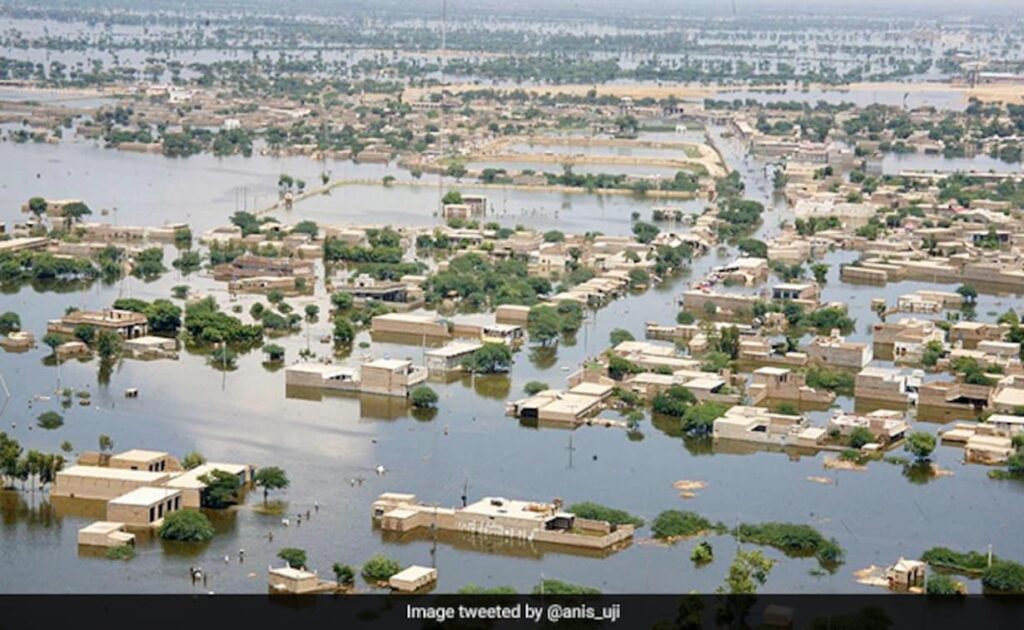Nowadays the devastating floods in Pakistan have become a global concern. More than one-third of the country is submerged in water and there has been colossal damage to life, infrastructure, and crops. The reason behind the devastating flood is more than average monsoon rain across the country. On average, Pakistan receives 410 mm (16 inches) of rainfall with most of it occurring during the monsoon season. The monsoon season which lasts from June to August brings 287.75 mm of rain. However, monsoon rains are not the only reason for the death and destruction caused by floods. Climate change which resulted in melting glaciers is said to be equally responsible for the widespread destruction in the 2022 floods. Looking back in history, this was not the first devastating flood, Pakistan has faced 21 major floods since its inception in 1947. The history of devastating floods in Pakistan is briefly described below.
Also Read
First Major Floods
Pakistan faced its first major flood in 1950, the newly created state had little resources and no disaster management strategy. As a result, the heavy monsoon rains flooded a vast area of around 17,720 square km; roughly10,000 villages. Besides the destruction of crops and property, 2190 people lost their lives as well during the floods in Pakistan. Heavy monsoon rains also caused major floods in 1955, 1956, 1957, and 1959 resulting in the loss of lives and property.

Pakistan Floods During the 70s
The 70s decade witnessed devastating floods in Pakistan that brought large-scale destruction. In 1973 and from 1975 to 1978, heavy monsoon rains caused widespread floods. These floods exposed the poor disaster management system as a large section of the population was affected. The death toll during the 70s flood was estimated to be 2266 while the economy suffered a loss of US $ 12 Billion. This was a huge economic loss as the country was staggering from the economic aftermath of the 1971 war. Loss of lives, destruction of crops, and displacement of people due to floods called for a strong disaster management system. The 70s floods highlighted that a very large section of the population was physically exposed to the devastation of floods.
Pakistan Floods During the 80s
In 1981 and 1983, spells of heavy monsoon rains led to devastating floods in Pakistan again. The scale of death and destruction was lower than in the previous floods as 641 people lost their lives. The nation again had to bear the cost of rebuilding flood-hit areas and environmental losses were mounting up.
Pakistan Floods During the 90s
In 1992, 1994, and 1995, heavy monsoon rains again wreaked havoc flooding large areas and claiming lives. In 1992 alone, 13,208 villages were submerged in water and 1000 people lost their lives. Loss of life and property every year exposed the government’s failure to set up an effective disaster management system.
Major Floods During 2000s
2001 and 2003 again caught Pakistan unprepared to face heavy monsoon rains and therefore suffer in the form of loss of life and property. Environmental and economic losses were also growing with every flood. Each flood reversed whatever economic growth Pakistan had achieved and caused environmental destruction. The worst part was the inability of the Pakistani government to address this recurrent natural disaster to minimize its impact.
The 2010 Floods
The 2010 floods is one of the deadliest in the history of Pakistan as this widespread flood affected major areas of Pakistan. Two consecutive spells of heavy rains which began in the last week of July and ended in the first week of August flooded major parts of Baluchistan and KPK provinces. The banks of rivers during the 2010 floods burst completely entering the nearby villages and lands. Both provinces were cut off from the rest of the country making relief work difficult. Rainfall then began in Punjab and Sindh provinces and rainwater along with a large volume of water from the north caused huge damage.
A timely warning from NDMA (National Disaster Management Agency) helped in evacuating people minimizing loss of life. However, the government did not take appropriate steps to save property and crops. Damage and destruction from the 2010 flood were colossal also people faced a shortage of food, shelter, and medical aid. Sindh was the worst affected province as floods paralyzed life for some time and it took two months to drain out water. Around 1985 people lost their lives and nearly twice as many were injured during the 2010 flood. The economic loss was estimated to be the US $43 billion; the private sector, and local and international agencies contributed to collect funds for the needy.
Pakistan Floods of 2022
2022 floods will be written down in history as the most destructive floods in Pakistan. Besides heavy monsoon rains, climate change also contributed to 2022 floods. After the two poles, Pakistan has the largest number of glaciers. An estimate, currently there are more than 7200 glaciers in Pakistan, in 2016, the number of glaciers was 7253. In six years, several glaciers have melted because of global warming. The carbon footprint of Pakistan is quite small just 1% as compared to that of developed countries like the USA, the UK, Australia, Canada, and China.
Carbon emissions are acting as a catalyst in melting the glaciers. Heavy rains lashed major parts of the country and rainwater along with melting snow and glaciers caused devastating 2022 floods. Up till now, more than 1300 deaths have been reported while one-third of the country is underwater. Around 1.1 million houses have been destroyed and people rendered homeless during the 2022 floods. Baluchistan and Sindh are the worst affected provinces and many areas in these provinces are cut off from land making them unreachable.
Conclusion
A brief overview of the history of devastating floods in Pakistan reveals its vulnerability to floods. Pakistan Meteorological Department and International agencies had warned Pakistan of heavy monsoon rains in April. The NDMA is responsible for the entire spectrum of disaster management but in actuality, it did not even properly communicate flood warnings. Both federal and provincial governments paid no attention to 2022 flood warnings either and were busy managing the political crisis in the country. Timely response to flood warnings could have reduced devastations by bringing down fatalities and economic losses. As per NDMA, the construction of dams is vital to save the country from flooding. The government must construct dams to control floods otherwise with melting glaciers and monsoon rains a new flood disaster will be added to the history of devastating floods in Pakistan every year.
